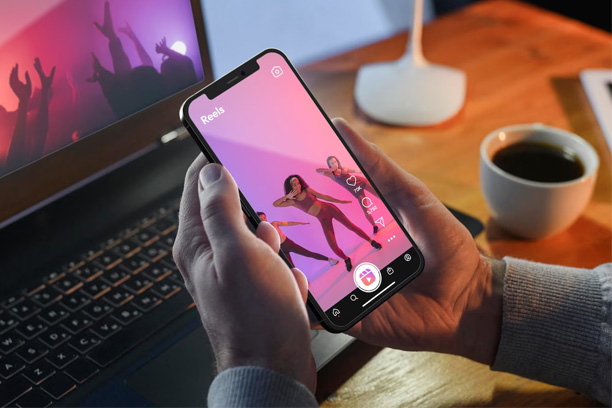Work Hours
Monday to Friday: 9AM - 6PM
Weekend: Closed

Content marketing has always been about storytelling, building trust, and creating valuable connections with audiences. But the way people consume content is evolving rapidly. Static blog posts and long-form articles, while still valuable, are no longer enough to hold attention in today’s fast-paced, mobile-first environment.
Audiences now expect content that is dynamic, engaging, and interactive. Video formats and interactive elements are quickly becoming essential, not optional. Businesses that adopt these strategies early are not just gaining visibility—they’re driving more leads, improving customer engagement, and ranking higher on search engines.
This blog explores the future of content marketing, focusing on the rise of short-form videos, webinars, and interactive blog content and why these formats are shaping the way businesses connect with their audiences.
Why Content Marketing is Evolving
Consumer behavior has changed drastically. People want quick, engaging content they can consume on the go. Studies show that nearly 80% of internet traffic is now video-based, and interactive content consistently outperforms static formats when it comes to engagement.
At the same time, Google’s search algorithms are prioritizing user experience. Dwell time, click-through rates, and bounce rates all influence rankings. This means content needs to do more than just exist—it must capture attention and encourage interaction.
Businesses that continue relying only on text-heavy blogs may struggle to maintain visibility. The future lies in video and interactivity, which not only meet audience expectations but also signal strong engagement metrics to search engines.
The Rise of Short-Form Video

Short-form video is no longer just a social media trend—it’s a powerful marketing tool that businesses of all sizes are leveraging to increase brand visibility and engagement. Platforms like TikTok, Instagram Reels, and YouTube Shorts have made video content more accessible than ever.
Why Short-Form Video Works
- Easy to consume: Attention spans are shrinking, and quick, bite-sized videos meet that demand.
- High engagement: Videos generate significantly more shares and comments compared to static posts.
- Mobile-first optimization: With most people consuming content on mobile devices, short videos fit naturally into browsing habits.
How Businesses Can Use It
- Showcase products in action with short demos.
- Share customer testimonials in video snippets.
- Repurpose blog content into 30–60 second explainer clips.
- Break down long webinars into short highlights.
Beyond engagement, embedding videos on websites also improves SEO performance by increasing dwell time and lowering bounce rates. Video isn’t just a marketing add-on—it’s a critical ranking factor.
Webinars: The New Authority-Building Tool
While short-form video focuses on quick engagement, webinars are powerful for building authority and trust. Whether live or on-demand, webinars give businesses a platform to showcase expertise, educate audiences, and nurture relationships at scale.
Benefits of Webinars
- Lead generation: Attendees are often high-quality prospects who are actively seeking solutions.
- Brand authority: Hosting educational webinars positions a business as a thought leader.
- Versatility: Webinars can be recorded and repurposed into blogs, short videos, or podcasts.
Use Cases
- Product launches and demonstrations.
- Industry insights and educational sessions.
- Training and onboarding for clients.
Webinars also work seamlessly with email marketing, allowing businesses to nurture leads before and after the session. The future of webinars is moving toward greater interactivity, with features like live polls, Q&A sessions, and audience-driven discussions that turn passive viewers into engaged participants.
Interactive Content: Driving Engagement Beyond Clicks
Interactive content takes audience participation to the next level. Unlike static articles, interactive formats encourage users to engage directly, which improves brand recall and conversion rates.
Examples of Interactive Content
- Quizzes & polls: Help users discover the right product or service.
- Calculators: Provide instant results for ROI, cost savings, or pricing.
- Interactive infographics: Make data more engaging and easier to understand.
- Clickable blogs: Allow readers to choose their journey through the content.
Why It Works
- Keeps users on a page longer, which boosts SEO.
- Provides personalized experiences that increase customer satisfaction.
- Generates valuable data about customer preferences and behaviors.
For example, an eCommerce business can use quizzes to recommend products, while a B2B company might use a calculator to help clients estimate ROI from digital marketing investments. In both cases, the interactive element creates deeper engagement than traditional content.
How Businesses Can Adopt Video & Interactive Content
Adopting new content formats may seem resource-intensive, but businesses can start small and scale gradually.
Cost-Effective Strategies
- Repurpose existing content: Convert blogs into explainer videos or podcasts.
- Leverage free tools: Use platforms like Canva for simple video creation, or webinar tools with basic plans before upgrading.
- Embed interactivity in blogs: Add polls, clickable tabs, or calculators to enhance engagement.
- Test before scaling: Run small campaigns to see what resonates most with your audience.
Integration Across Channels
- Use short-form videos in social media campaigns.
- Host webinars as lead-generation events and promote them via email.
- Embed interactive elements in landing pages to improve conversions.
The key is to align video and interactive strategies with overall marketing goals, ensuring they work together with SEO, PPC, and social media efforts.
Expert Insights: What the Future Holds
The next few years will see video and interactive content become even more sophisticated. Advancements in AI and machine learning are already enabling personalized video recommendations, automated captions, and interactive storytelling.
Looking further ahead, AR and VR experiences may redefine interactive content, giving users immersive ways to engage with brands. Businesses that adopt these innovations early will be ahead of the curve, positioning themselves as forward-thinking leaders in their industry.
But at the core, the principle remains the same: audiences want engagement, authenticity, and value. Businesses that adapt to these expectations will not only see higher rankings but also stronger relationships with their customers.
Conclusion
The future of content marketing is clear: video and interactivity are no longer optional—they’re essential. From short-form videos that drive instant engagement to webinars that build authority, and interactive blogs that boost participation, these strategies are reshaping how businesses attract and retain audiences. Companies that embrace these changes will see tangible benefits: stronger SEO performance, higher lead generation, and long-term brand loyalty.
Get started with a free consultation and discover how our experts can create content marketing strategies that grow your business.

